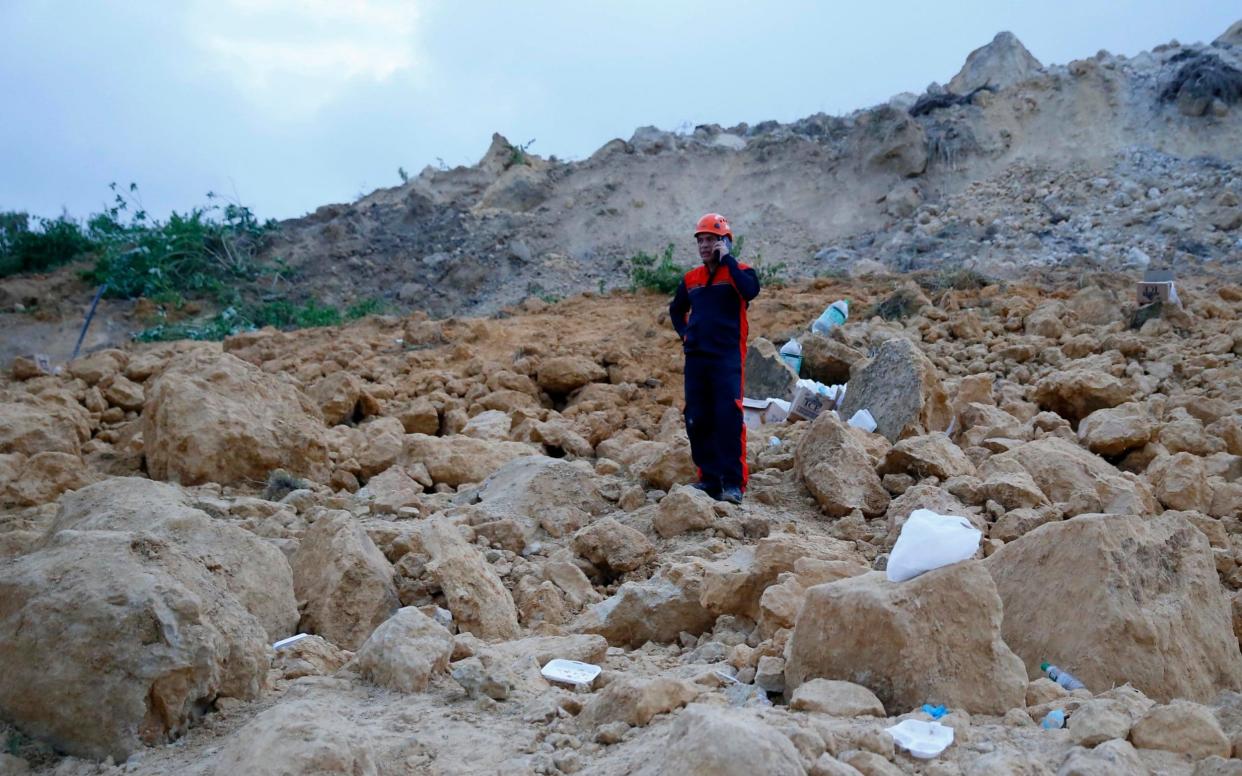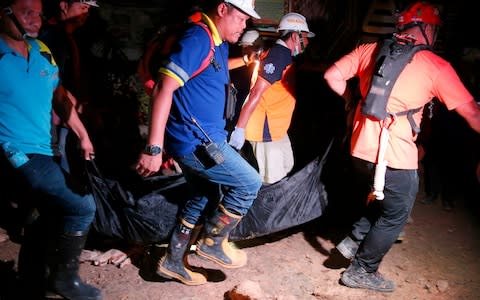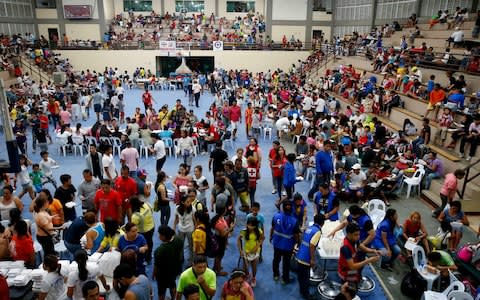Desperate victims of Philippines landslide that killed 29 send texts for help from under the rubble

Relatives said they had been getting text messages from people trapped under the rubble of a landslide in the Philippines that has killed 29 people.
The collapse of a mountain in Naga City, Cebu province, on Thursday morning buried dozens of homes and left an unknown number of people missing, and rescue efforts are continuing.
However, the messages pleading for help stopped within a few hours of the disaster - but distraught relatives continued to hope more survivors would be found, begging for more backhoe machines to be brought to the mound of earth and debris. There are currently far too few machines to dig for the dozens of people still missing, they said.
Resident Nimrod Parba said one of his trapped relatives called for help about three hours after the landslide hit, entombing 13 of his kin. "They are still under the rubble, they are still there. They are covered in shallow earth, we need a backhoe," Parba said.
Authorities have limited the number of rescuers and other people inside the stricken villages, fearing heavy rains on the loose and soaked ground could cause new slides. Thursday's landslide also covered part of a river, prompting officials to order a temporary canal to be dug.
A man embracing a child in a house was dug out by rescuers using a backhoe Thursday night in a poignant scene witnessed by journalists.

Following the landslip, Philippine troops and police forcibly evacuated residents of five villages nearby that are also vulnerable to similar events.
Some residents left on their own, but the bulk of more than 1,200 people in villages adjacent or near the landslide-hit area were forcibly moved by authorities Thursday night, police Chief Superintendent Debold Sinas said Friday.
About 270 government troops and policemen were deployed to prevent residents from returning to high-risk villages, Sinas said.
President Rodrigo Duterte is to visit Naga city in Cebu province later Friday as he faces his latest crisis.

The landslide in the central region occurred as parts of the far northern Philippine deal with damage from a typhoon that hit last weekend. At least 95 people were killed and more than 50 are missing, many in the gold-mining town of Itogon in the north where landslides hit houses and a chapel where people had gathered in the storm.
Cebu province was not directly hit by Typhoon Mangkhut but the storm intensified the seasonal monsoon rains that normally fall in tropical Asia.
It's not clear what set off the landslide, but some residents blamed limestone quarries, which they suspect may have caused cracks in the mountainside facing their villages.
The Philippines is one of the world's most disaster-prone countries. It is lashed by about 20 tropical storms each year and has active seismic faults where earthquakes and volcanic eruptions occur. Poverty forces many people to live in those vulnerable areas, making natural disasters more deadly.

